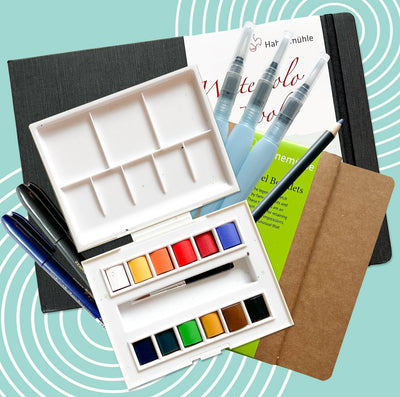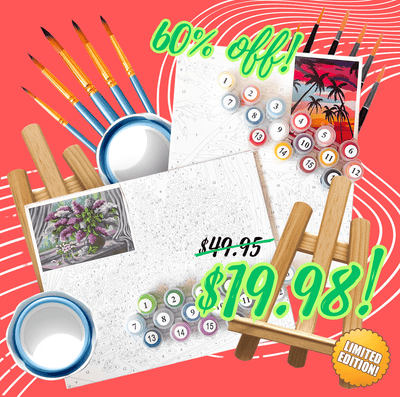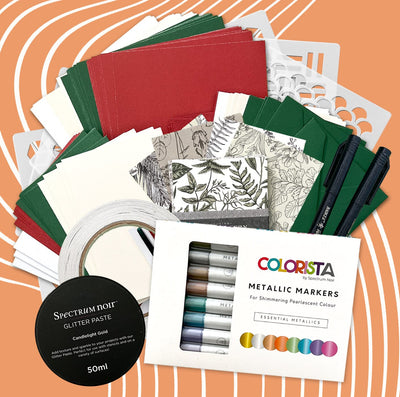Mold making and casting are central techniques in the history of art and design. But their uses and applications are longstanding and varied, and also play a vast role in today’s arenas of artistic production and industrial manufacture.
In the world of art, the techniques of mold making and casting have served as tools by sculptors and other artists: in both studies that lead to the final form of an artwork, or as a means of reproducing an artwork. And increasingly, contemporary artists see them as the work of art in and of themselves.
But these processes also play leading roles outside of fine art, and support areas as varied as scientific research and mass manufacture in the automotive industries.
Many of the decorative and everyday objects you yourselves use have been made through various mold making processes!
Read on to learn more about the techniques, uses and history of mold making and casting, as we jump through time and land on select examples and periods of note!
Page 461 of The Dental Cosmos (1912) Photo credit: Internet Archive Book Images via Visual Hunt
What is a Mold?
A mold is a block that contains a hollow cavity in a desired shape. Casting is the process of shaping liquid or a pliable material (this might be plastic, glass, metal, clay, epoxy, concrete, plaster or many other options!) is poured into the mold (or matrix). The liquid hardens or sets inside the mold, adopting its shape. What you end up with is a solidified object also known as the casting. To help remove the casting from the mold, a release agent, or a chemical used to prevent other materials from bonding to surfaces, is usually needed.
There’s a whole global industry run by skilled mold makers and sculptors who create the tools and machinery necessary for making molds. Some important pieces of equipment include a kiln and furnace. They might be found in a foundry (a factory that produces metal castings). Here are two simple techniques to give you an idea of the casting basics, although there are countless processes, in varying degrees of technical sophistication.
Bi-valve molding process
In this technique, a casting is made using two molds, one for each half of the object. As opposed to single-use waste molds, which are destroyed in the process of removing the casting from the mold, the bi-valve molds can be used several times.
Piece molding
This process employs a number of different molds, each creating a section of a more complex (and normally larger and more valuable) casting. Piece molding is also conceived for multiple-use casting.
Read on to match the above techniques with the artwork and other castings we’ll discuss!
Image from The archeology and prehistoric annals of Scotland (1851). Photo credit: Internet Archive Book Images via Visual Hunt
Mold Making: A Prehistoric Art
Mold making is a 6000-year old skill. That means that our prehistoric ancestors were working in the same technique that we can pass on to our children and grandchildren. How cool is that?
Can you guess the form of the oldest surviving casting? Drawing on characteristic prehistoric animal themes in art, it is a copper frog from 3200 BC Mesopotamia! The discovery of melted copper is thought to have followed that of gold and silver (which were probably found in their natural form and hammered in todesired shapes). By the time prehistoric people came across copper, they already had knowledge of pottery making. This means that they could then combine two processes, and shape the liquid metal through clay, sand or stone molds.
Thanks to these early discoveries and connections, today we are able to perform highly technical and complex mold making and casting processes!
Archaeologists have also unearthed stone molds used for making axes from about 3000 BC. They were probably made from an identical two-piece mold tied together with a rope, with a hole on top through which the liquid metal would have been poured. Many early weapons were fabricated through casting, making this technique key to the success of the hunting and gathering lifestyle of early humans. This shows the affect that fabrication techniques have on all aspects of life.
Egyptomania
In the third millennium BC, casting methods were advanced by Egyptians who notably plastered the heads of mummies for portraits of the deceased. The rich art and material culture of the Egyptian civilization was centered around their spiritual beliefs. In particular, they believed in rebirth after death. According to them, death was simply a momentary phase between life and the afterlife. Eternal life could be ensured through things such as mummification (preservation of the body) and the offering of objects. As a result, Egyptian funerary practices and rituals involved a wide range of production in an assortment of materials, from jewelry and objects for the home, to painting and statuary. The process of casting would of course have been central to all this.
At this time, a range of casting techniques was being developed in both the Near and Far East, before making their way to Europe.
The Italian cast court. Photo credit: Matt From London via Visual Hunt / CC BY
Ancient Greek and Roman Molds
Since Greek and Roman Antiquity, plaster has been a fundamental medium in the long-standing history of replicating artworks, especially marble and bronze sculptures in the round and sculptural reliefs. For those of you who skipped Art History 101, “in the round” refers to a freestanding sculpture, while “relief” is a technique in which the sculpted elements remain attached to a solid background of the same material, so the sculpted material is raised above the background plane.
The earliest large-scale Greek bronze sculptures were simple in form and shaped from a hammer, separate parts of which were sometimes attached with rivets. From there, artists moved on to the technique of hollow lost wax casting in order to make large freestanding bronzes. They were typically cast in several pieces, one for each body part to be depicted (remember our earlier explanation of piece molding?). Here, the sculptor would have made a clay core in the rough size and shape of the statue. An armature made of iron rods would next stabilize this core, which was then coated with wax. To attain an even casting, there would have also been vents to facilitate the flow of molten metal and for gases to escape. The model was next covered in an outer layer of clay and heated to remove the wax, creating a hollow mold. After reheating, the clay hardened and burned out the wax residue, all ready to be filled with metal!
Greek statues were still highly prized during Roman rule. Roman artists created marble and bronze copies of them, by making plaster casts that could be shipped to workshops throughout the Empire. In addition to the domestic settings of the wealthy, these works were used to fill niches to decorate a range of public spaces such as theaters and publics baths. In fact, these Roman copies are of vital importance to understanding history today. Because a large number of Greek statues were melted down, Roman marble and bronze copies are the only surviving evidence of them.
Donatello’s David in bronze and a plaster cast of it at the Victoria and Albert Museum, London. Photo credit: Ketrin1407 via Visual Hunt / CC BY and seier+seier via Visual Hunt / CC BY
Mold making during the Renaissance
The artists and humanists, or those who studied the humanities and privileged classical antiquity, of Renaissance Europe of the fourteenth and fifteenth centuries were fascinated by the culture of their Ancient predecessors. While, according to them, the arts and humanities had declined during the Middle Ages, they were at their high points at the time of Greek and Roman Antiquity. This extended from literature to the arts, whose drawings and sculptures offered perfect perspective, proportions and beauty ideals.
As art schools began to teach these Ancient techniques of anatomy and perspective, they made and drew on plaster casts from the work of the ancients. (The most common type of plaster mainly contains either gypsum, lime or cement.) Molds were notably made out of wood, terracotta and plaster (as opposed to today’s silicon rubber!).
Like today, the work that went into making the mold itself was probably the most painstaking stage, whereas the actual casting process was relatively simple. The mold would have been filled with plaster powder dissolved in water, which was removed after hardening. Plaster is cheap and sets quickly, making it ideal for rapid reproductions. These casts filled the private collections of scholars, artists, aristocrats and royals.
Italy was central to the Renaissance, with Florence as a particularly thriving city. This is where the iconic sculptor Donatello lived and worked. In 1430, he completed his masterpiece in bronze David, known to be the first freestanding bronze statue in Western art. This and other works would have been supported by the new era of foundry development in the fifteenth century.
Portrayed prevalently during and after the Renaissance, David was a biblical hero who vanquished the Philistine giant, Goliath. In this story about heroism and overcoming odds, Donatello’s version of the young hero was young with delicate, feminine features, posed with an oversized sword and helmet. It was thought to be a commission by the wealthy Cosimo de Medici and placed in Medici Palace courtyard.
Image of mold racks. Photo credit: pinprick via Visual Hunt / CC BY-NC-ND
Mold making and cake decorating
Let’s remember though, mold making processes are not just for fine art! From the seventeenth century and earlier, “fancy jellies” were created using molds (just think of your favorite 1950s recipe!). They decorated table settings, and could be quite extravagant. The concept behind this type of mold relates to fossils. Similarly, in his 1660 book, Accomplisht Cook, the English chef Robert May instructed readers to mold jellies in scallops and other kinds of seashells in order to attain their intricate shapes. Eventually these would have been manufactured in different forms and materials such as glass, brass and tin.
What interesting mold shapes do you have in your kitchen?
Plaster casts in the Art Gallery of New South Wales. Photocredit: Art Gallery of New South Wales / CC BY-NC-ND
19th Century design and casting
Casts played an important role in the applied arts during the Age of Industrialization. As more and more objects could be produced in a range of styles thanks to new industrialized technologies, design reformers feared a deterioration of public taste. As such, the Victoria and Albert Museum in London joined other institutions who sought to educate the public on matters of taste. Much in the style of their Renaissance counterparts, the display of plaster casts of masterpieces was central to this undertaking. Similar efforts were made elsewhere in Europe and the United States, such as at Paris’ Ecole des Beaux Arts and the Pennsylvania Academy of the Fine Arts and Museum of Fine Arts, Boston. These institutions, which their encyclopedic view of art history, used plaster castings to fill gaps in their collections of (mainly) European Masters.
Auguste Rodin
Like his predecessor, the French animalier (sculptor of animals) Antoine-Louis Barye (1796-1875), the renowned French sculptor Auguste Rodin (1840-1917) was one of the artists who responded to the large demand for public and domestic sculpture in the nineteenth century. He was able to disseminate his work to a large audience through large-scale bronze castings of his work, which he made in his atelier with a team of plaster casters, carvers and founders.
Did you know? Interestingly, current French law stipulates that no more than twelve original casts of Rodin’s sculptures may be made.
Although he preferred the lost wax casting method (otherwise known as cire perdu), he often used the hollow sand casting technique. The latter was commoner in nineteenth-century Paris, as more foundries had the capacity to do it. With this technique, the desired shape is pressed into sand to leave a negative imprint. A slightly smaller version is placed within the negative imprint and secured with pins, allowing space for molten bronze.
Rodin’s plaster castings also served as studies for his carved sculpture and bronze statues. From his preliminary sketches, he would make a clay model to then fashion into a plaster casting. Often, he would make several castings of one piece with which to experiment. He even had a collection of castings in the shape of body parts to make various combinations, from which he made his wonderful sculptural renderings of the human form, such as the Burghers of Calais (1889).
Auguste Rodin’s Burghers of Calais in the Victoria Tower Gardens in front of the Houses of Parliament in London. Photo credit: neilalderney123 via Visual Hunt / CC BY-NC
Ceramics and Glass
Perhaps one of the oldest uses of molding and castings has been in the production of ceramics and glass for making tableware for eating and drinking.
Slipcasting is often used in the mass production of pottery and ceramics. This is especially the case in the manufacture of objects that are not easily made on a potter’s wheel. The basic technique involves pouring a liquid clay slip into plaster molds. The finished casting is normally then glazed in a kiln. Solid cast mold are especially used for the making of handles and plates, while hollow cast mold are generally more suited to vases and cups.
A detail of a 1960 Cheverolet Corvette. Photo credit: Photos by Clark via Visual Hunt / CC BY-NC
Mold Making and Casting in the Postwar Era
The momentum in the twentieth century in terms of industrial design production was heightened during the Second World War in the United States in order to support the war industry. Following the war, these efforts were reinvested in the plastics and injection molding industry to answer the large demand for inexpensive, mass-produced objects.
Injection molding is used to create many things, from structural, mechanical and automotive parts, to packaging, musical instruments, toys, and one-piece furniture items. It is the ideal process for producing high volumes of the same object. Essentially, this consists in a screw-type plunger forcing molten plastic into a mold, which solidifies in its new shape. It is most commonly used for working with thermoplastic and thermosetting polymers.
Injection molded kit pieces. Photo credit: wbaiy via Visual Hunt / CC BY-SA
Mold-A-Rama
Used predominantly from the 1950s, Tike Miller Mold-A-Rama machine brought injection molding in the homes of many. Machines were located at countless shops and tourist attractions, so people could observe the process from start to finish, and come away with an inexpensive plastic figurine, from zoo animals to steam trains. Through this process, a pipe shoots liquid hot polyethylene into a mold, while a second pipe blows steam inside the mold, leaving it hollow inside.
Mold-A-Rama animal figurines. Photo credit: Texas713 via Visual Hunt / CC BY-NC
Lifecasting
Let’s not forget about the other functions of mold making and casting techniques. Lifecasting is the process of creating a three-dimensional copy of a living human body. This has especially proven useful for art production, the special effects industry (for making props and animatronics) and towards the creation of medical prostheses and dentures.
One of the oldest dental techniques has drawn on casting to make gold or porcelain duplicates of teeth for a variety of purposes such as dentures or crowns. Dentists typically make wax models of the object to cast and burn the wax in an oven, leaving a hole in the desired shape, which is then filled with liquid metal.
Today
The techniques of mold making and casting are still employed to make the majority of the things we use, from the structural components that support the spaces in which we reside to the household goods we purchase daily.
As over the course of early twentieth-century modernism, plaster casts became to be seen as outdated relics of an older art system, many museums destroyed, de-accessioned and hid them from public view. In more recent years, institutions have reassessed these archival holdings, starting to revalue these pieces for the historical and documentary information they provide.
In our current postmodern age, artists have also begun to rethink their aesthetic value and meaning, embracing and exploring the notions of reproduction and authorship, for instance. Sean Hunter William is one such artist who currently uses mold making as a main feature of his art practice.
And although perhaps less prevalent than in the nineteenth century, bronze and other metal casting still figures widely in current art production. Just think of Louise Bourgeois’s (1911-2010) majestic bronze spider sculptures from the 1990s.
Need we say more?
Louise Bourgeois sculpture at Tate Modern, London. Photo credit: blopsmen via Visual Hunt / CC BY-NC-ND


